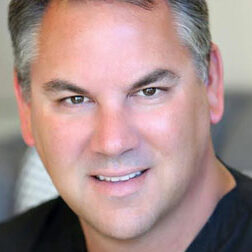Many women may feel that they lack self-confidence with their breast size, and people can feel increased confidence after a breast implant procedure by a board-certified plastic surgeon. This is probably a major reason why there were 365,000 breast augmentations performed in 2021 in the United States.
Having cosmetic surgery itself isn’t all that complicated for the patient. Instead, it is the recovery time that may be the challenge if you don’t follow the recommended post surgery protocols.
Patients may have questions such as:
- Where should you start when it comes to the recovery process?
- What should you do to aid the healing process?
- What activities should you avoid?
Following are our Top 10 Tips to allay any concerns you may have about the successful outcome of your breast augmentation surgery.
1. Don’t Strain Yourself
Directly after your breast augmentation surgery, you will want to avoid activities that strain yourself in any way, especially your upper body. Immediately following your surgical procedure, your incisions and breasts may be swollen, bruised and sensitive. The last thing you want to do is disturb the area or accidentally tear some stitches.
Straining yourself after surgery can damage your healing progress in a variety of ways. When you strain yourself, you may increase the pressure around your incision. This brings more blood flow into the area, which will also be under pressure.
As a result, you may experience bleeding if you end up straining yourself. Bleeding can interfere with the healing process and can be quite severe in some people.
For some, the bleeding might stop on its own, but for others, the bleeding might be excessive and you might even have to go back to your surgeon or the hospital to get it fixed.
Another problem with straining yourself is that the stitches might stretch your skin in a painful way. This causes obvious discomfort and could also interfere with the healing process.
For the best results, it is best to allow yourself to relax so that there are less opportunities to damage your incisions or stress the area around the incisions.
2. Don’t Lift Anything Over 20 Pounds
Lifting anything over 20 pounds can be particularly harmful to your recovery process. Some people think that they can go right back to their exercise routines after surgery and start lifting weights or doing other intensive exercises. However, this is not true, and if you’re not careful, you could prolong your healing process.
Of course, this doesn’t mean that you can’t exercise at all. Exercising is actually an important part of recovering, but only if you do mild exercises.
For example, light-impact aerobic activity can be quite helpful for your recovery: taking brisk walks outside, strolling on a treadmill, or using an exercise bike. However, you should only start these exercises a few weeks after your surgery. If you start exercising too soon, you can end up straining yourself which doesn’t do much good when it comes to your recovery process.
As long as you stick to mild exercises like these and you don’t lift anything more than 20 pounds, you should be in great shape.
3. Pull Your Shoulders Back
It might not occur to you that pulling your shoulders back is important for your recovery from surgery. This simple act can give you a lot of pain relief. Many people feel pain or even spasms in their chests after breast augmentation surgery.
This is because the chest muscles in the area often become irritated or swollen due to the excess stimulation of the area from the surgery. This kind of pain can make it difficult to focus on other aspects of your life.
Fortunately, all you need to do to relieve it is pull your shoulders back.
This simple act is important because it gives your chest muscles a light stretch, which stops the muscles from spasming and gives them more room to relax. When seated, don’t let your shoulders sit forward as this will increase the spasms. If after breast augmentation surgery your chest is in a lot of pain and you don’t know what to do, try pulling your shoulders back and see if that helps.
4. No Smoking
Another thing you should avoid as you recover is smoking cigarettes. Many people don’t realize that smoking is a terrible thing to do after surgery. Not only can smoking increase the length of the healing process but it may also dramatically increase the risk of complications.
This is because nicotine has the ability to constrict your blood vessels. This limits the supply of blood to the tissues in your body that are trying to heal. Blood is rich in oxygen and other nutrients, and if those nutrients can’t reach your chest, the tissue in that area will not be able to heal itself efficiently.
This can make it much more difficult for your incisions to heal in an efficient way. In some cases, smoking after breast augmentation surgery can even increase your risk of developing an infection. An infection, of course, could seriously damage your results.
So, if you want the best results from your surgery, make sure to stop smoking.
5. Ask for a Long-term Numbing Medicine During Your Surgery
The first few days after your surgery will be the most painful. Numbing medicine is very important during and after breast augmentation surgery so that you won’t be in any unnecessary pain.
The problem with most numbing medicines is that they don’t last very long.
Once the surgery is over, the medicine will start to wear off and the pain will start to bother you. You might have to take a different kind of numbing medicine for a week or so before the pain starts to subside.
A great strategy is to request a long-term numbing medicine to start with. For example, Blackhawk Plastic Surgery and Medspa offers numbing medication that lasts a full three days which takes the edge off the procedure. This ensures you won’t have to worry as much about taking other types of pain medication.
Long-term numbing medicine will ultimately improve your breast augmentation recovery experience.
6. Plan for Some Help
Some people think that they can get breast augmentation surgery by themselves without any kind of assistance, but this is not true. If you want everything to go smoothly, you will need to plan ahead and bring someone to help you. For this kind of surgery, a sedative will be used to render you unconscious for the duration of the procedure.
When you wake up, you will be very drowsy for many hours, if not a day or two. You may be so drowsy that you won’t be able to drive yourself home or do much of anything on your own. For that reason, you need to have someone that you trust with you such as a friend or family member.
Besides driving you home, you may also need someone to help you change your bandages, clean the incisions, get you food and water, and so on. This is particularly important for the first few days after the surgery. After that, you should be able to do most things on your own.
7. Ambulate Often
While taking time to rest is certainly important as you recover from breast augmentation surgery, moving around, or “ambulation”, is also very important.
Ambulation helps prevent blood clots and other complications (the odds of which are very low in a breast augmentation procedure) from developing. Keep moving, and you should be fine.
First, start by walking around your house for a few minutes. As you start to heal more, you can go outside and walk for longer distances.
Walking also keeps your body limber and loose rather than stiff. Ambulation will keep you more comfortable as you heal.
8. Take a Shower But Do Not Submerge Your Breasts
As you heal, it is important to keep your incisions clean and as dry as possible. This helps prevent the area from getting overrun with bacteria that could cause an infection. Keeping the area clean can also help you heal faster.
After your surgery, avoid submerging your breasts in water in any way. You are allowed to take a shower, but you should be careful when doing so. You don’t have to worry if your incisions only get a little bit wet as long as you don’t soak them.
You should avoid submerging your breasts in water for about a month as the incisions will still be very fresh and this could increase the risk of developing an infection. If you are worried about getting the incisions too wet, you can always bathe the area with a damp rag.
9. Tell Your Dentist About Your Implants
Telling your dentist about your breast augmentation may seem strange, but it is actually very important for your health. However, you need only do this during the first year of recovery.
Certain dental procedures can cause bacteremia which is the infiltration of bacteria into the blood. In some cases, this bacteria can then seed your breast implants and create a problem.
The best way to prevent this is to ask your dentist to give you antibiotics beforehand. That way, you should be safe from any bacteria that might come into play during your dental procedure. While antibiotics won’t entirely eliminate the risk of infection, they will lower the risk substantially.
10. Sleep on Your Back
Sleeping only on your back is very important as you recover, especially during the first month or so after your surgery. It is also a good idea to elevate your head while you sleep in this position.
Sleeping on your stomach after breast augmentation surgery is a bad idea for a variety of reasons.
Sleeping on your stomach increases the pressure around your implants. In some cases, the pressure may be so great that it may put pressure on the implants and perhaps cause a change in pocket shape. This is not only painful but it can ruin the appearance of your breast augmentation procedure.
Avoid problems by sleeping on your back instead of your stomach. This position should also be more comfortable as you heal anyway.
Recovery from Breast Augmentation Surgery
Breast augmentation surgery recovery is usually straightforward and complication free, especially if you follow all the recommended post-surgery protocols. Sometimes complications do arise, which is why it’s best to arm yourself with knowledge, develop a plan and prepare beforehand.
While you recover, you will want to avoid certain things like smoking, submerging your breasts in water and sleeping on your stomach. You’ll also want to take a proactive approach to walking and moving about, as well as relaxing so that you don’t strain yourself.
To learn more about this kind of surgery, schedule a consultation with us here.



